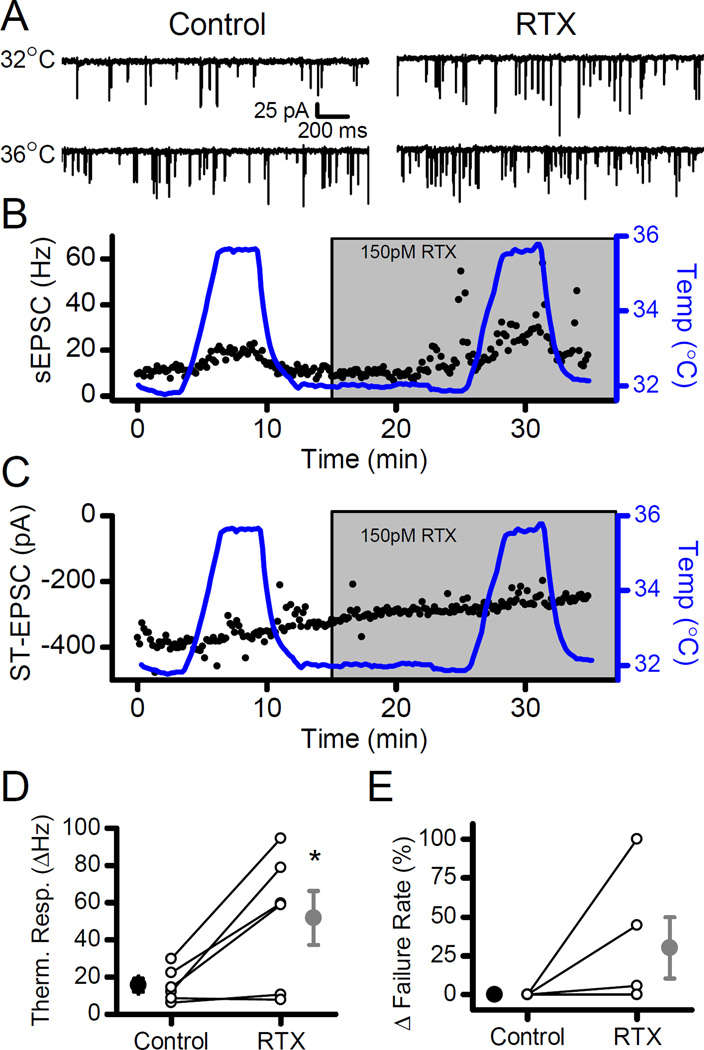Figure 6.
Low-level vanilloid activation of TRPV1 sensitized the sEPSC rate increases to small thermal changes. A) Raising the temperature from 32°C to 36°C elevated the frequency of sEPSCs. RTX (150 pM) boosted the rate of sEPSCs at 32°C but dramatically augmented the frequency increase of sEPSCs in response to the thermal step to 36°C. B) Diary plot displays, first, the increased sEPSC frequency with RTX, followed by the elevated sEPSC frequency at 36°C with RTX. C) In the same neuron, RTX failed to alter the amplitudes of ST-EPSCs at 32°C or 36°C. D) On average (n = 6), the mean of the thermal response of sEPSC frequency (Δ frequency, large filled symbols) increased in RTX (gray) compared to Control (black). E) Overall, failure rates did not significantly change with a temperature challenge between RTX (gray) and Control (black). In two individual neurons, the failure rate of the ST-EPSC increased substantially at 36°C in the presence of RTX. All asterisks represent p < 0.05.

